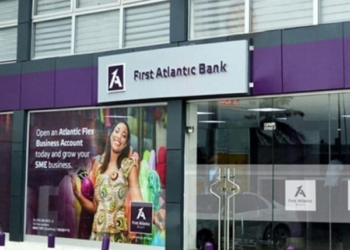Ghana’s banking industry is powering through one of its most robust recovery phases since the turbulence of the Domestic Debt Exchange Programme (DDEP), with new data from the Bank of Ghana showing a remarkable surge in total assets, consistent growth in deposits, and a strong rebound in lending.
The Central Bank’s November 2025 Summary of Economic and Financial Data reveals that total banking sector assets have crossed GHS 423.3 billion, a significant milestone that underscores renewed stability and confidence within the financial system.
According to the latest data, total assets jumped from GHS 415.2 billion in August to GHS 423.3 billion in October, marking one of the strongest upward shifts in 2025. The annual growth rate of 15.3%—although lower than the extraordinary 42% recorded in October 2024—still reflects a sustained expansion in the sector’s balance sheet.
The growth trajectory demonstrates the sector’s continued accumulation of high-quality assets, particularly government securities, which remain a safe haven for banks navigating the post-restructuring landscape. With macroeconomic conditions gradually stabilizing, banks are also increasing their exposure to private-sector lending, contributing to the overall rise in total assets.
The steady growth in assets signals a sector gradually reclaiming strength after the shocks of the DDEP, which had posed significant liquidity and solvency challenges. Banks have strategically rebuilt their portfolios, supported by improvement in capital positions and strong liquidity buffers.
Deposits Surge as Public Confidence Strengthens
Customer deposits—the backbone of the banking sector—rose to GHS 302.0 billion in October 2025, up from GHS 300.1 billion in September, continuing a positive trend that began early in the year. Although the annual growth rate of 8.9% is more muted compared to previous years, it reflects a steady recovery in depositor confidence.
Households and businesses appear to be responding positively to improved economic indicators, including easing inflation, stabilizing exchange rates, and enhanced bank performance. The upward trend in deposits also suggests increased preference for formal savings channels, particularly as banks strengthen their digital offerings and customer engagement strategies.
One of the strongest indicators of recovery is the jump in total advances, which reached GHS 103.1 billion in October, the highest point recorded so far in 2025. Lending has climbed consistently since May, when advances had dropped to GHS 87.3 billion.
The annual growth rate of 8.9% highlights improved credit demand from sectors such as agriculture, trade, and manufacturing, alongside renewed willingness by banks to expand lending portfolios. This development is crucial for economic recovery, as increased credit to businesses fuels job creation, production capacity expansion, and overall economic vitality.
The rise in lending also suggests that banks are gaining confidence in the credit environment, supported by ongoing improvements in loan repayment indicators.

Non-Performing Loans Show Encouraging Decline
A major highlight in the data is the continued decline in non-performing loans (NPLs), which fell to 19.5% in October from over 23% earlier in the year. This marks one of the most significant improvements since mid-2023 and indicates successful loan restructuring efforts, better risk management, and improved borrower performance.
Even more compelling is the NPL ratio excluding the loss category, which remained stable at 6.8%, reflecting a healthier pool of performing loans. The downward trend in NPLs positions the sector well as it works toward meeting the Bank of Ghana’s target of reducing NPLs to 10% by the end of 2026.
Profit indicators remained strong, with Return on Assets (ROA) rising slightly to 5.8% and Return on Equity (ROE) holding firm at 32.2% in October. These figures underscore banks’ improved income performance and operational resilience.
Cost efficiency gains continue to play a major role in profitability. The operational cost-to-gross-income ratio dropped to 48.1%, down from 52.7% in October 2024, while the total cost-to-gross-income ratio eased to 74.1%. This demonstrates success in cost rationalization efforts, enhanced digital operations, and improved revenue generation capabilities.
Liquidity Buffers Strengthen Stability
The sector’s liquidity position remains robust, with the ratio of core liquid assets to total assets rising to 27.7% and core liquid assets to short-term liabilities reaching 33.8%. These ratios underscore the sector’s readiness to meet withdrawal demands, support credit growth, and withstand financial shocks.
Strong liquidity also reflects prudent regulatory oversight by the Bank of Ghana, which has encouraged banks to maintain high-quality liquid assets as part of broader financial stability measures.
The Bank of Ghana’s November data paints a picture of a banking sector firmly on the path to recovery. With assets expanding rapidly, deposits rising steadily, lending strengthening, and NPLs falling significantly, the sector is rebuilding resilience after the challenges of the past three years.
Although risks remain, especially around high NPL levels, cost pressures, and macroeconomic uncertainties—the current trajectory shows that Ghana’s banking sector is regaining stability and strengthening its role as a critical driver of economic growth.
READ ALSO:Mahama’s Government Defends Transparency on Sensitive Petitions























